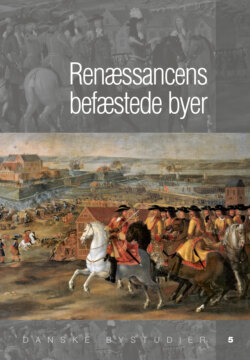Читать книгу RenAessancens befAestede byer - Группа авторов - Страница 36
На сайте Литреса книга снята с продажи.
Summary Fortified Cities in the Renaissance – a Survey of the Danish State
ОглавлениеBy Jan Kock
There was civil war in Denmark in the years preceding 1536 when the imprisoned Catholic king Christian II (King of Denmark and Norway 1513-1523) and his supporters fought against the Protestant groups around King Christian III (King of Denmark and Norway 1534-1559). Approximately one-third of the country’s (almost) 100 cities were protected by fortifications, and a great number of these were attacked during the conflicts. In general, however, these fortifications were old and ineffective, and consisted of rather modest earthworks and moats, although gatehouses were frequently brick constructions. Among the strongest fortified cities were Kalundborg, Nyborg and Copenhagen, all of which had city walls, towers and gatehouses that were constructed entirely of brick. From 1536 the kings Christian III, Frederik II, and Christian IV, advanced the use of city walls and fortifications in Denmark. These were adjusted on a regular basis – within the financial frames available at the time – in order to meet actual needs.
In 1536 King Christian III started to rebuild and modernize the fortifications of the kingdom. He invested in the newest tech nology with roundels to maximise the use of canons. It was expensive to do this so only a selected number of the old strongholds were enlarged. At the same time a few new fortifications were built, mainly situated along the borders. The city wall of Copenhagen was greatly expanded, as was the nation’s most important naval base which was situated here as well. Along the east side of Øresund, the King invested in Malmø, Landskrone and Helsingborg, and also at the Great Belt strait in Nyborg. Later he invested in more modest fortifications, though still with roundels, for instance in Aalborg. By that time the use of roundels was rather outdated, but it is presumed that the King simply could not afford to build bastions of the continental style. Frederik II (1559-1588) followed the standard for fortifications in Denmark set by his father and only adjusted it under pressing circumstances, mainly along the borders of the principal enemy, Sweden.
Christian IV (1588-1648) intensified the fortification of the borders of the country with fortified cities, both to the north and to the south. New fortified cities were, among others, Christianopel, Christianstad, Christiania (today’s Oslo), and Christiansand. To the southern borders he renewed the already fortified Krempe and built Glückstadt as well as other military installations. At the capital, Copenhagen, he also made a significant addition to the most important naval base of the nation with a sophisticated harbour, and with a much stronger fortified city wall. The King almost exclusively used bastions, which were considered an excellent, up-to-date, system for coping with the canons of the enemies.
For the first time a general plan for the fortification of all the country was developed in 1646, but at that time it was nearly too late. Denmark was no longer a leading power in the Baltic and the North Sea, as parts of Norway and the land that is today’s southern Sweden were lost to Sweden in 1644 and 1658.
